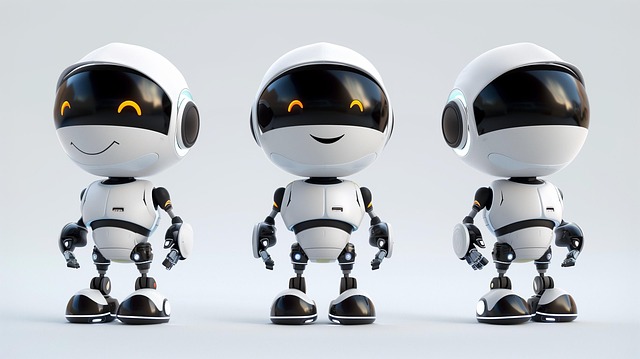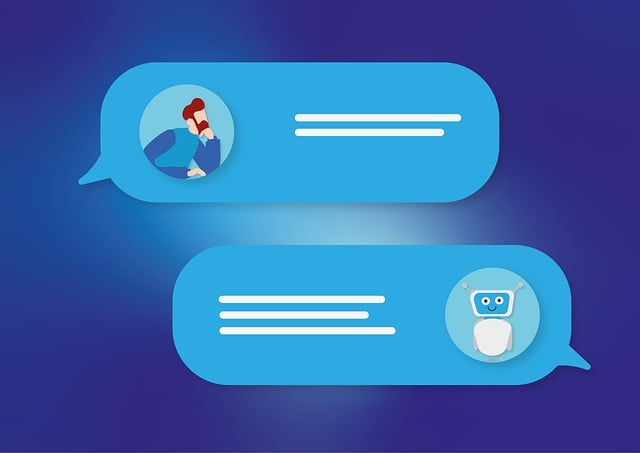OChatbot is a leading platform for creating user-friendly, free AI chatbots without coding, offering advanced natural language processing, customizable dialogue flows, and integration across messaging channels. To build an effective chatbot, first define its purpose and target audience, then design intuitive conversation flows, train the AI using diverse datasets and refine rules, and finally, test extensively before deployment. Continuous testing and user feedback are crucial for ongoing improvements to ensure optimal performance as a free AI chatbot.
Looking to create your own chatbot? You’re not alone. As businesses seek innovative ways to engage customers, chatbots are rising in popularity. This comprehensive guide explores how to build a powerful yet user-friendly chatbot using OChatbot, a free AI chatbot platform. From defining your bot’s purpose and target audience to designing conversation flows and training with AI, we break down the process step-by-step. Learn how to test, launch, and continually improve your chatbot for optimal performance. Discover the potential of a free AI chatbot today with OChatbot.
- Understanding OChatbot: A Free AI Chatbot Platform
- Defining Your Chatbot's Purpose and Target Audience
- Designing the Conversation Flow and User Experience
- Training and Programming Your Chatbot with AI
- Testing, Launching, and Continuously Improving Your Chatbot
Understanding OChatbot: A Free AI Chatbot Platform

OChatbot is a standout free AI chatbot platform that empowers users to create and deploy their own intelligent chatbots without any coding required. This user-friendly tool leverages advanced artificial intelligence to facilitate natural language processing, enabling your chatbots to understand and respond to user queries with remarkable accuracy. Whether you’re a business looking to enhance customer service or an individual enthusiast exploring the capabilities of AI, OChatbot offers a powerful yet accessible way to bring conversational AI to life.
The platform provides a comprehensive suite of features, including pre-built templates, customizable dialogue flows, and integration options for various messaging channels. This versatility allows you to tailor your chatbot to fit specific needs, whether it’s handling basic inquiries or providing more complex assistance. By leveraging OChatbot, you can quickly deploy chatbots that enhance user experiences, automate tasks, and offer 24/7 availability—all without incurring the typically high costs associated with traditional AI development.
Defining Your Chatbot's Purpose and Target Audience

Defining your chatbot’s purpose and target audience is a critical step in creating an effective AI-powered assistant, like a free ai chatbot or ochatbot. Before beginning development, clearly outline what problems your chatbot aims to solve. Consider who your ideal users are and what specific needs or questions they have that your chatbot can address. For example, a chatbot designed for customer service should be able to handle common queries, provide support, and potentially resolve basic issues without human intervention.
Knowing your audience allows you to tailor the chatbot’s tone, language, and functionality to their preferences and expectations. Understand their level of technical proficiency, preferred communication style, and any cultural nuances that might impact their interaction with the chatbot. This information guides the design process, ensuring the final product resonates with users and effectively fulfills its intended purpose.
Designing the Conversation Flow and User Experience

When designing the conversation flow for your free AI chatbot, consider the user’s journey and aim to create a natural, intuitive experience. Start by mapping out key user intents and entities – what questions might users have, and what information do they need? This will help you structure the chatbot’s responses and guide the conversation in relevant directions. Utilise oChatbot’s capabilities to anticipate user needs, offer tailored suggestions, and gracefully handle unexpected inputs.
Focus on creating a seamless user experience by ensuring clear communication between the chatbot and its users. Use simple, concise language, and consider incorporating interactive elements like buttons or menus for complex tasks. Regularly test and refine your conversation flow based on user feedback and interaction patterns to continuously enhance both functionality and engagement.
Training and Programming Your Chatbot with AI

Training and programming your chatbot with Artificial Intelligence (AI) is a pivotal step in its development. Many platforms now offer free AI chatbot tools that utilize advanced natural language processing (NLP) techniques, enabling your chatbot to understand user inputs and generate contextually relevant responses. These tools often come with pre-trained models that can be fine-tuned for specific tasks or industries. By feeding your chatbot a diverse dataset, you enhance its ability to handle a wide range of user queries.
Programming involves setting the rules and logic that govern your chatbot’s behavior. This includes defining intents (user intentions) and entities (relevant data points), crafting responses, and establishing dialogue flows. Many oChatbot platforms provide intuitive interfaces for this purpose, allowing developers to build complex conversational scenarios without extensive coding. Regular updates and retraining based on performance metrics ensure your chatbot stays sharp, adapts to new trends, and delivers the best possible user experience.
Testing, Launching, and Continuously Improving Your Chatbot

After crafting and fine-tuning your chatbot, it’s time to put it through its paces. Testing is a crucial step in ensuring your oChatbot delivers accurate and relevant responses. Utilize a diverse set of test cases, covering various user queries and scenarios, to assess its performance. This involves inputting different types of messages, from straightforward questions to complex or ambiguous requests, to see how the chatbot handles them. Regularly monitor its output, checking for any errors, inconsistencies, or missed opportunities for improvement.
Once your chatbot demonstrates satisfactory performance during testing, it’s ready to launch. Integrate it into your desired platform—a website, messaging app, or social media channel—and make it accessible to users. Remember that launching is not a one-time event; it’s the beginning of an ongoing process. Continuously gather user feedback and monitor chatbot interactions to identify areas for enhancement. Regular updates and refinements will ensure your free AI chatbot remains effective and engaging over time, providing users with an ever-improving experience.
Creating a chatbot is no longer a complex task thanks to platforms like OChatbot, offering a free AI chatbot experience. By understanding your target audience and defining clear conversational flows, you can design an engaging user experience. Utilizing AI for training allows your chatbot to learn and adapt, ensuring accurate responses over time. With proper testing and continuous improvement, your OChatbot will deliver exceptional service, revolutionizing the way users interact with your brand or service.
